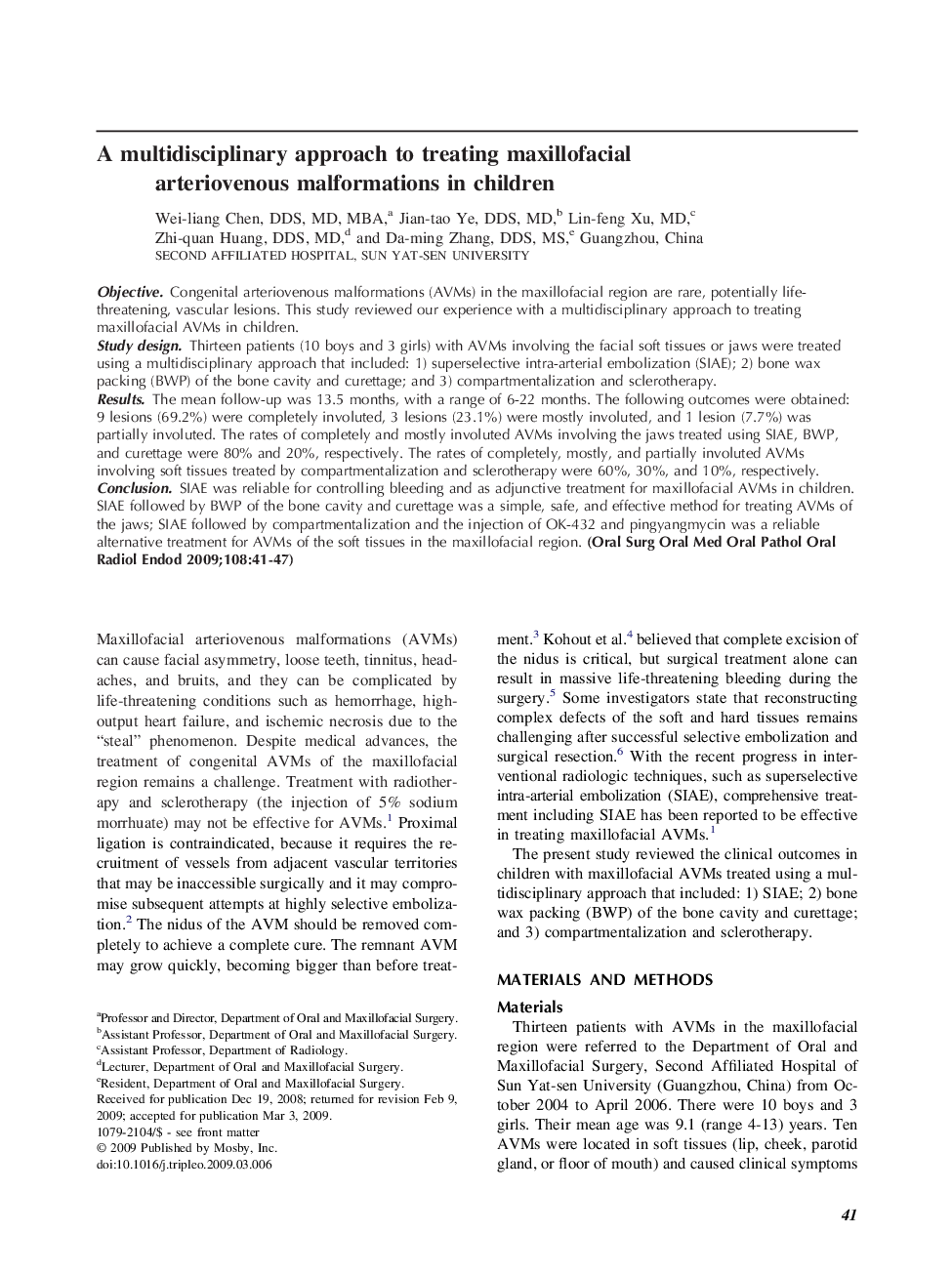| Article ID | Journal | Published Year | Pages | File Type |
|---|---|---|---|---|
| 3168182 | Oral Surgery, Oral Medicine, Oral Pathology, Oral Radiology, and Endodontology | 2009 | 7 Pages |
ObjectiveCongenital arteriovenous malformations (AVMs) in the maxillofacial region are rare, potentially life-threatening, vascular lesions. This study reviewed our experience with a multidisciplinary approach to treating maxillofacial AVMs in children.Study designThirteen patients (10 boys and 3 girls) with AVMs involving the facial soft tissues or jaws were treated using a multidisciplinary approach that included: 1) superselective intra-arterial embolization (SIAE); 2) bone wax packing (BWP) of the bone cavity and curettage; and 3) compartmentalization and sclerotherapy.ResultsThe mean follow-up was 13.5 months, with a range of 6-22 months. The following outcomes were obtained: 9 lesions (69.2%) were completely involuted, 3 lesions (23.1%) were mostly involuted, and 1 lesion (7.7%) was partially involuted. The rates of completely and mostly involuted AVMs involving the jaws treated using SIAE, BWP, and curettage were 80% and 20%, respectively. The rates of completely, mostly, and partially involuted AVMs involving soft tissues treated by compartmentalization and sclerotherapy were 60%, 30%, and 10%, respectively.ConclusionSIAE was reliable for controlling bleeding and as adjunctive treatment for maxillofacial AVMs in children. SIAE followed by BWP of the bone cavity and curettage was a simple, safe, and effective method for treating AVMs of the jaws; SIAE followed by compartmentalization and the injection of OK-432 and pingyangmycin was a reliable alternative treatment for AVMs of the soft tissues in the maxillofacial region.
